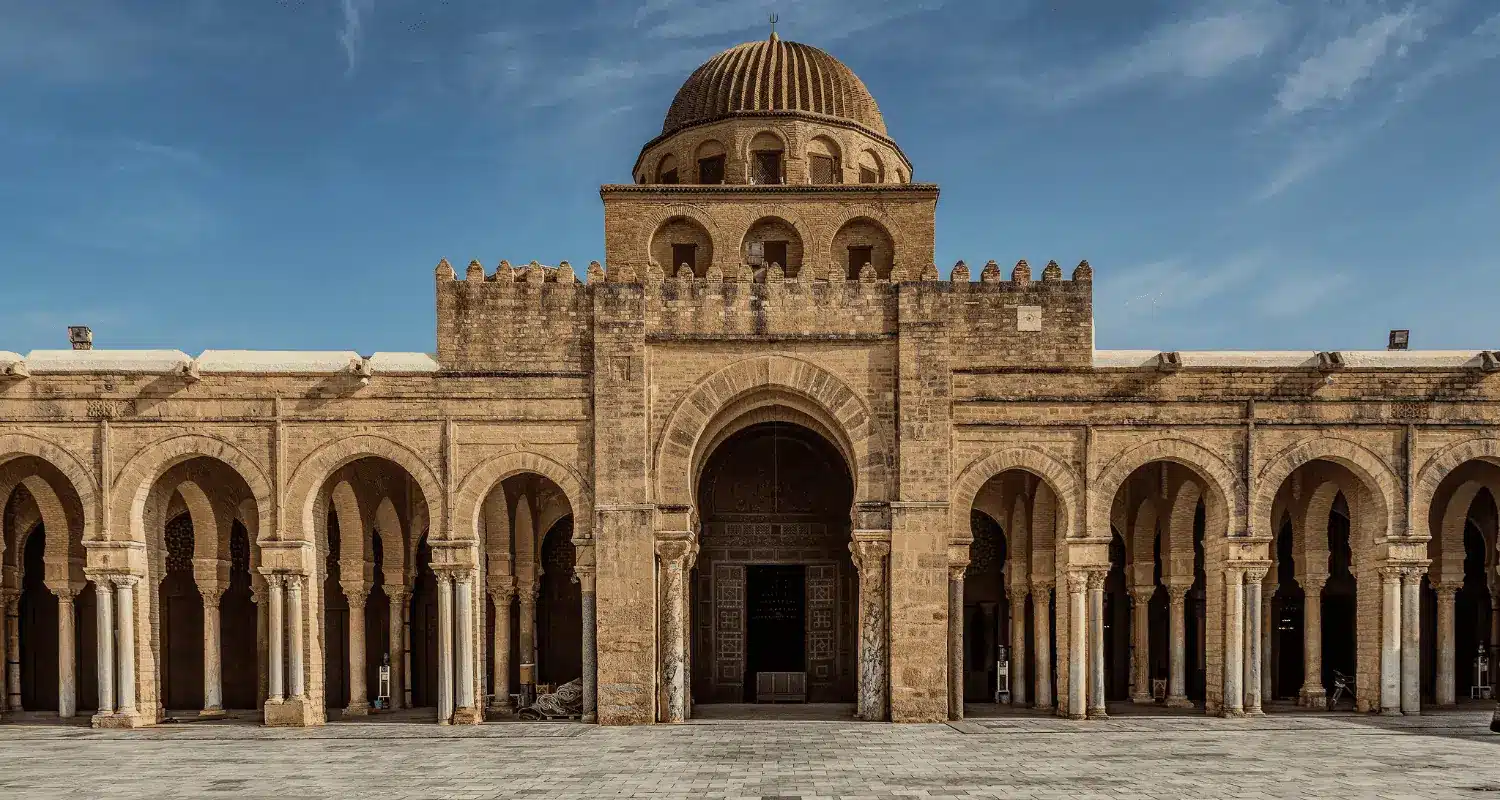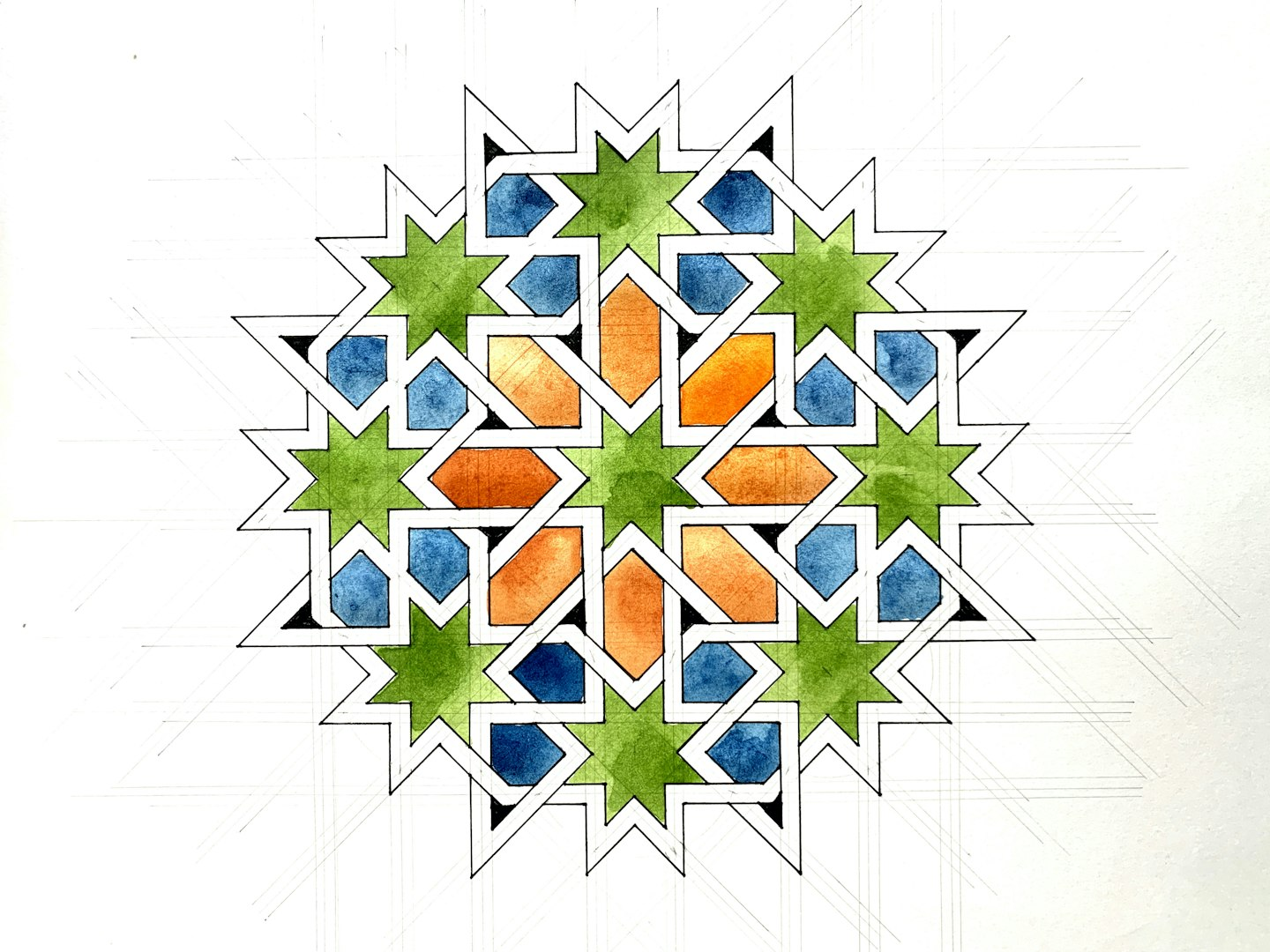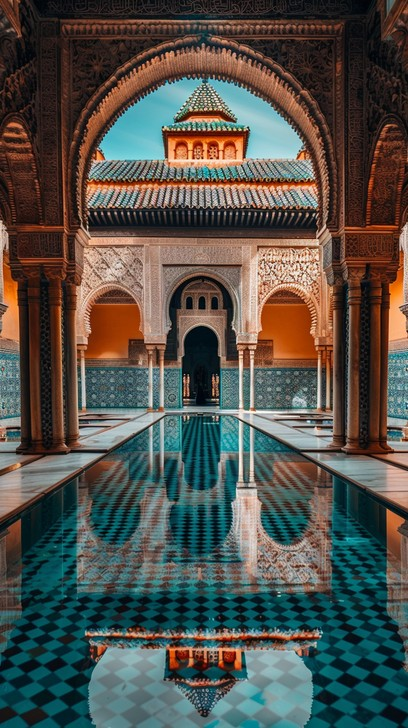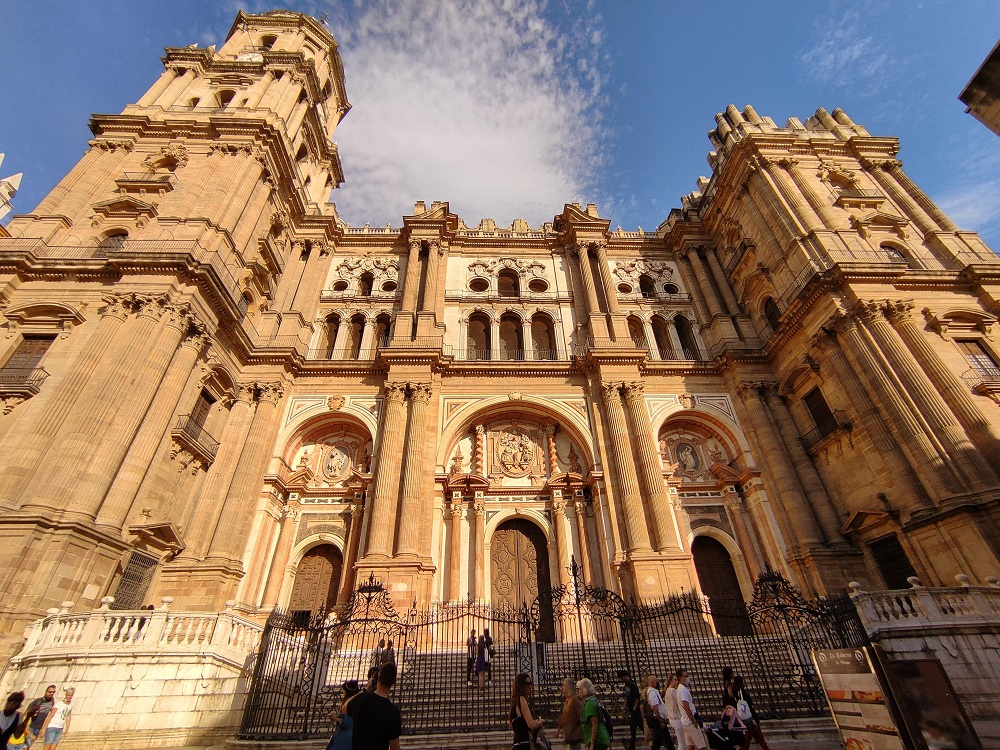- Published on
Unveiling the Spiritual Harmony of Moroccan Andalusian Gardens A Journey Through Sacred Geometry
- Authors

- Name
- Adil ABBADI
Introduction

In the heart of Morocco, a unique blend of Islamic and Andalusian influences has given birth to a distinctive architectural style that embodies the essence of spiritual harmony – the Moroccan Andalusian gardens. These serene oases, often hidden behind majestic riads and ancient medinas, are a testament to the country's rich cultural heritage. This article delves into the sacred geometry that underlies the design of these enchanting gardens, exploring the intricate patterns, symbolism, and philosophy that make them a true marvel of Islamic art.
- Cultural Context
- Geometric Patterns and Symbolism
- Traditional Significance
- Modern Relevance
- Cultural Preservation
- Conclusion
- Cultural Call-to-Action
Cultural Context
The Moroccan Andalusian gardens are a direct result of the Moorish influence that swept through the Iberian Peninsula during the Middle Ages. As Islamic rule expanded into Spain and Portugal, it brought with it a unique blend of architectural, artistic, and philosophical traditions. The Andalusian gardens, in particular, were a fusion of Roman, Visigoth, and Islamic styles, giving rise to a distinctive aesthetic that emphasized harmony, balance, and spiritual connection.
Geometric Patterns and Symbolism

The Moroccan Andalusian gardens are renowned for their stunning geometric patterns, which adorn every aspect of the architecture, from the intricately tiled walls to the ornate fountains and pavilions. These patterns, often based on Islamic geometric principles, are more than just aesthetically pleasing – they hold deep spiritual significance. The repetitive use of shapes, such as the eight-pointed star and the intricate zellij tile patterns, is believed to evoke a sense of unity, infinity, and the connection between the physical and spiritual realms.
Traditional Significance
In Moroccan Andalusian gardens, the relationship between nature and architecture is deeply intertwined. The carefully manicured gardens, often featuring citrus trees, roses, and other fragrant flowers, are designed to create a sense of serenity and tranquility. The use of water features, such as fountains and reflecting pools, adds to the calming atmosphere, while the geometric patterns and Arabic calligraphy serve as a reminder of the spiritual dimensions of the garden.

Modern Relevance
While the Moroccan Andalusian gardens are deeply rooted in tradition, they continue to inspire modern architects, designers, and artists. The emphasis on sustainability, eco-friendliness, and spiritual connection resonates deeply with contemporary audiences. The use of geometric patterns and Islamic architectural principles has influenced a wide range of design disciplines, from interior design to urban planning.
Cultural Preservation
Efforts to preserve and promote the Moroccan Andalusian gardens are underway, with many historical sites being restored and protected by UNESCO and local authorities. The Moroccan government has also launched initiatives to promote cultural tourism, recognizing the importance of these gardens as a vital part of the country's heritage.

Conclusion
The Moroccan Andalusian gardens are a testament to the power of sacred geometry to create a sense of spiritual harmony and balance. By exploring the intricate patterns, symbolism, and philosophy that underlie these enchanting oases, we can gain a deeper appreciation for the cultural heritage of Morocco and the importance of preserving our shared cultural legacy.
Cultural Call-to-Action
As we marvel at the beauty and spirituality of the Moroccan Andalusian gardens, let us not forget the importance of cultural appreciation and understanding. Let us strive to promote cross-cultural exchange, preserve our cultural heritage, and recognize the enduring value of these sacred spaces.
